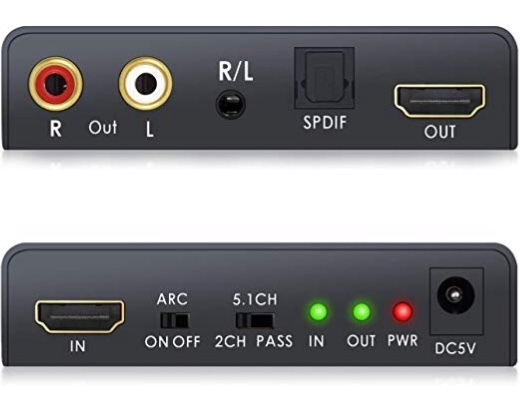I have a Samsung UN32J5205 TV. It’s only 32”. I know that’s small for all of you, but I have tunnel vision, and it’s the largest I can manage. Anyway, I am a bit discouraged. I bought the PlayBase and 2x Sonos One speakers. I have the app setup with them as surrounds. I bought an audio extractor/HDMI switcher so that I could get the best vocal sound from source to my Sonos system. With the switcher, if I have ARC turned on, I don’t get sound. I called Samsung, and they are saying my TV doesn’t support ARC. If I have ARC turned off, I do get sound out of the PlayBase, but the 5.1 input puts nothing through my Sonos One speakers. Am I going to have to buy a whole new TV? :( IF and only IF there is no other way, which 32” TV should I buy to where I don’t have to use the splitter to get untouched audio from the TV into the SoundBase? Thanks much in advance for input/feedback.
Getting Surround Working
Best answer by Airgetlam
Ok, let’s work this one thing at a time.
You've got a 32 inch TV, along with a PLAYBASE and an HDMI switch with an optical output. This is good, we just likely need to make some adjustments, and it will all work.
HDMI-ARC should be ignored, it has no impact on your situation, unless you’re trying to use apps that exist on the TV. If so, things are a bit more complex, so let us know.
In general, all of your devices should be connected to your inputs on the HDMI switch. Cable boxes, satellite boxes, game consoles, whatever you have.
The TV is connected to the HDMI output on the HDMI switch, and connected to any HDMI port you want to use on your TV.
The optical cable is connected to the HDMI switch output, directly to the input on your PLAYBASE.
Now you’re done with cabling, it’s time to deal with settings.
On any device that you have connected with an HDMI cable to the HDMI switch, go in to the audio settings. Each device needs to be told to send only a Dolby Digital signal. If it is sending anything else, you won’t get a proper sound from the PLAYBASE and surrounds.
In your setup, the actual audio settings on the TV don’t make a difference, since you are pulling the audio out before it reaches the TV.
So, once you’ve set all the connected device’s audio settings, you can look in the Sonos controller to see if the PLAYBASE is receiving the correct information. Open up the controller while you’re playing something on the TV, and click on settings. Then click on system. Scroll down to system settings, and click on about my system.
In that report, you’ll see information about all your speakers, and what they are doing at the moment you ran the report. Look under your PLAYBASE and the line that starts with Audio In, which is followed by what the PLAYBASE is receiving, either stereo or Dolby Digital 5.1. If it is anything other than Dolby Digital 5.1, you need to look at one of two things. Either the program being played doesn’t have a Dolby Digital soundtrack, like many various news shows, talk shows, etc., or you need to go back and check the audio settings on the device you’re using to feed that signal to the switch and ultimately the TV.
This is a lot of typing, feel free to ask any question you need to. And I have gone from top to bottom, you may be able to skip some of the earlier steps, as you’ve already done them.
Enter your E-mail address. We'll send you an e-mail with instructions to reset your password.


